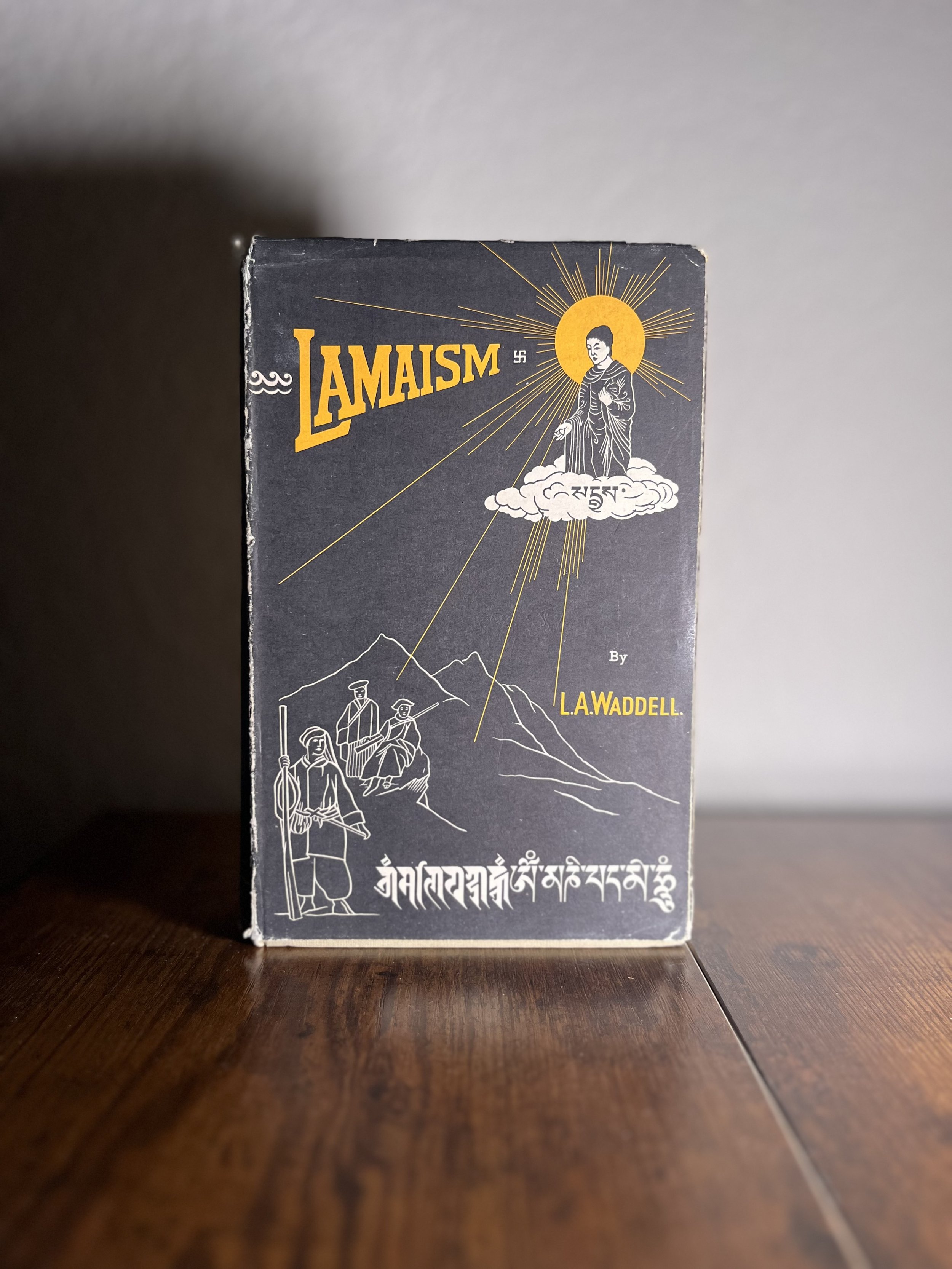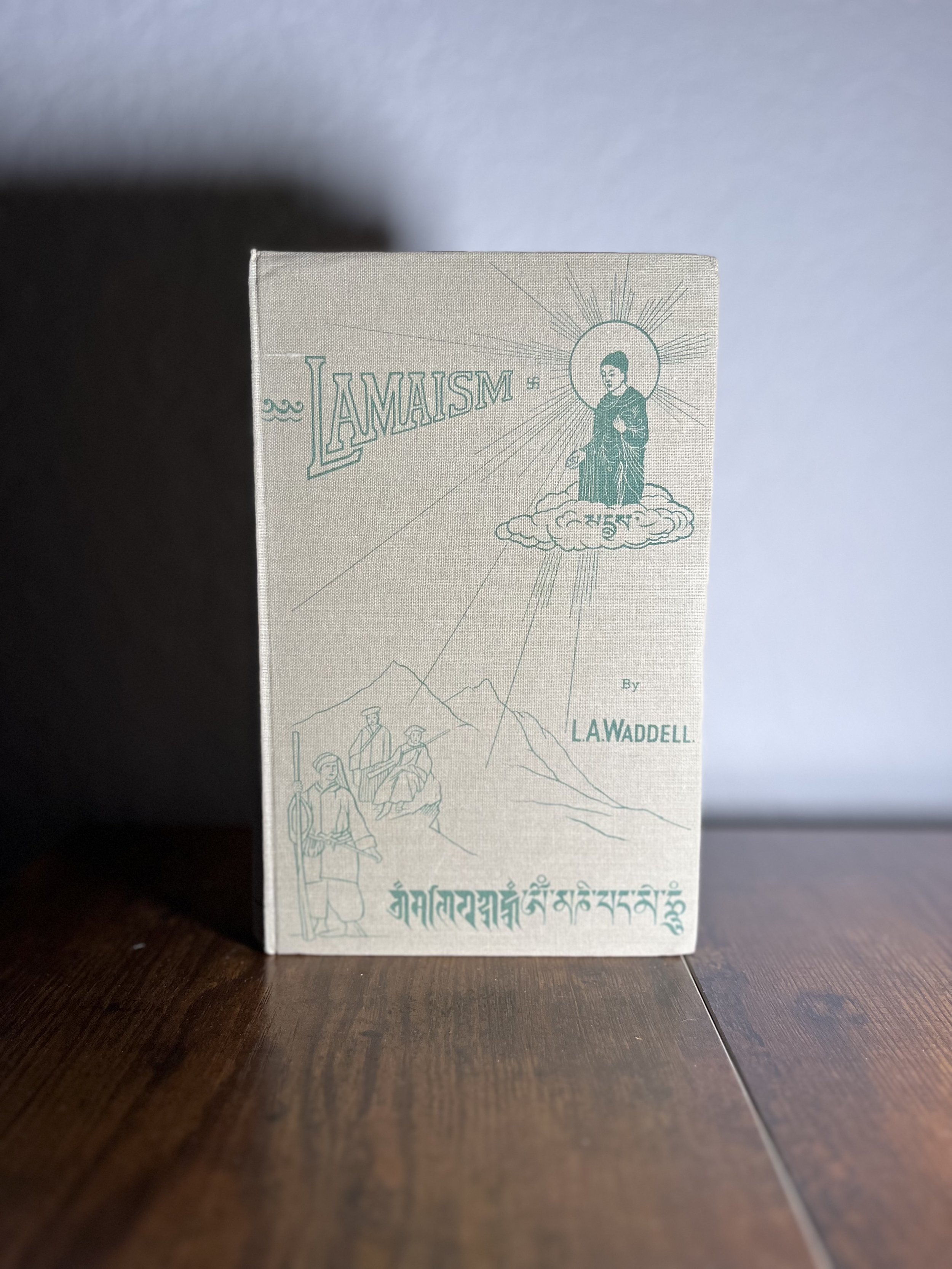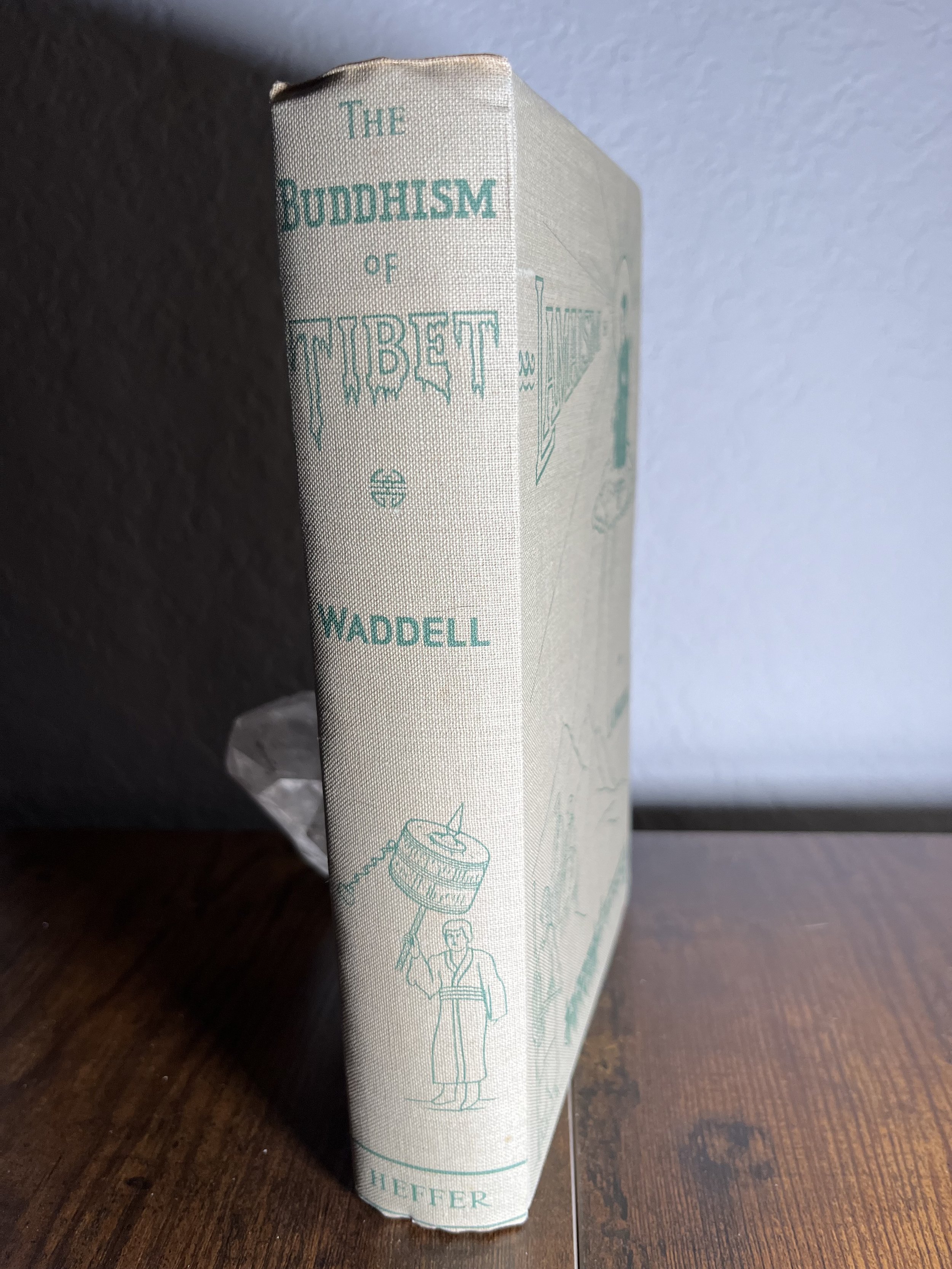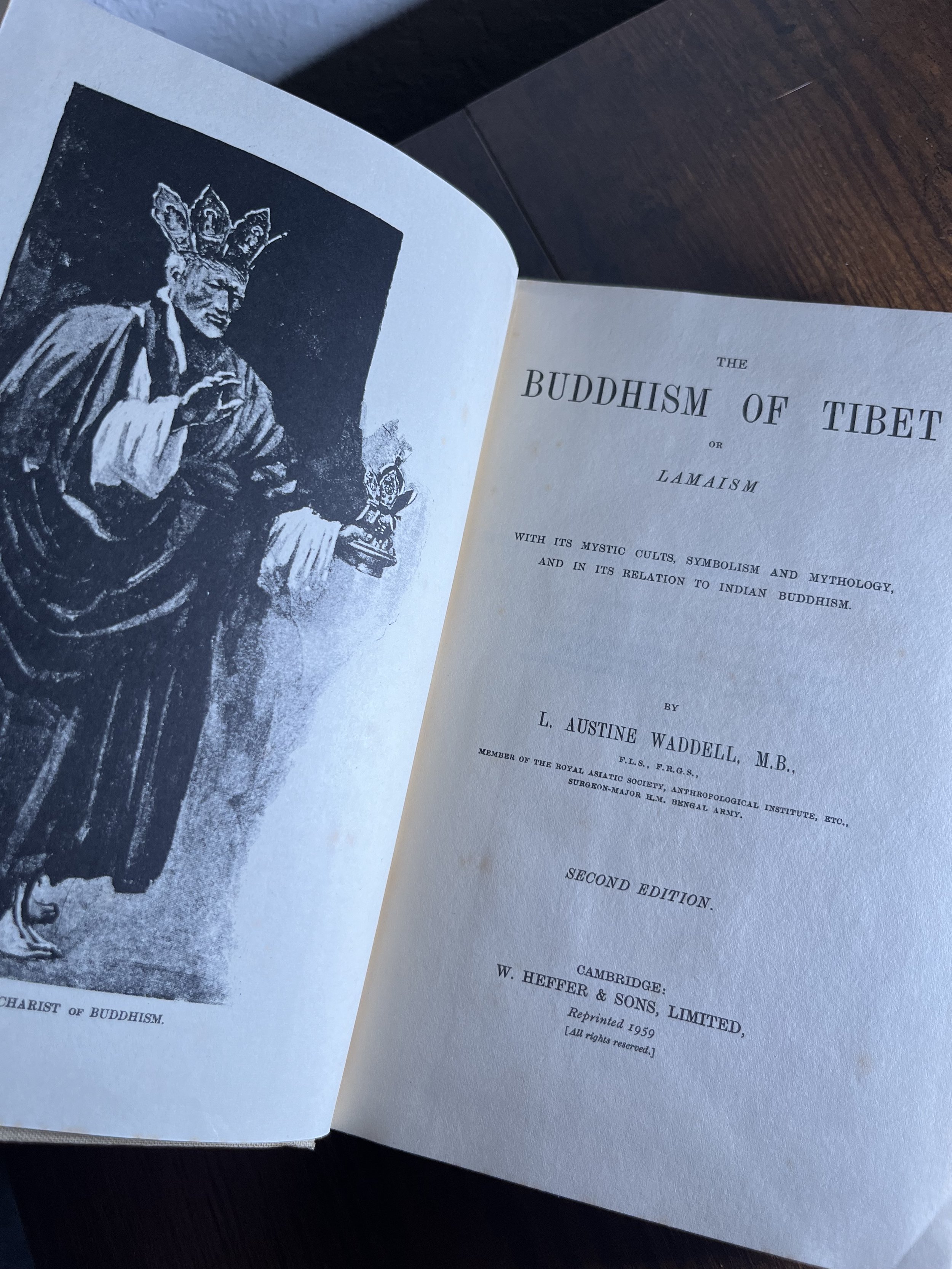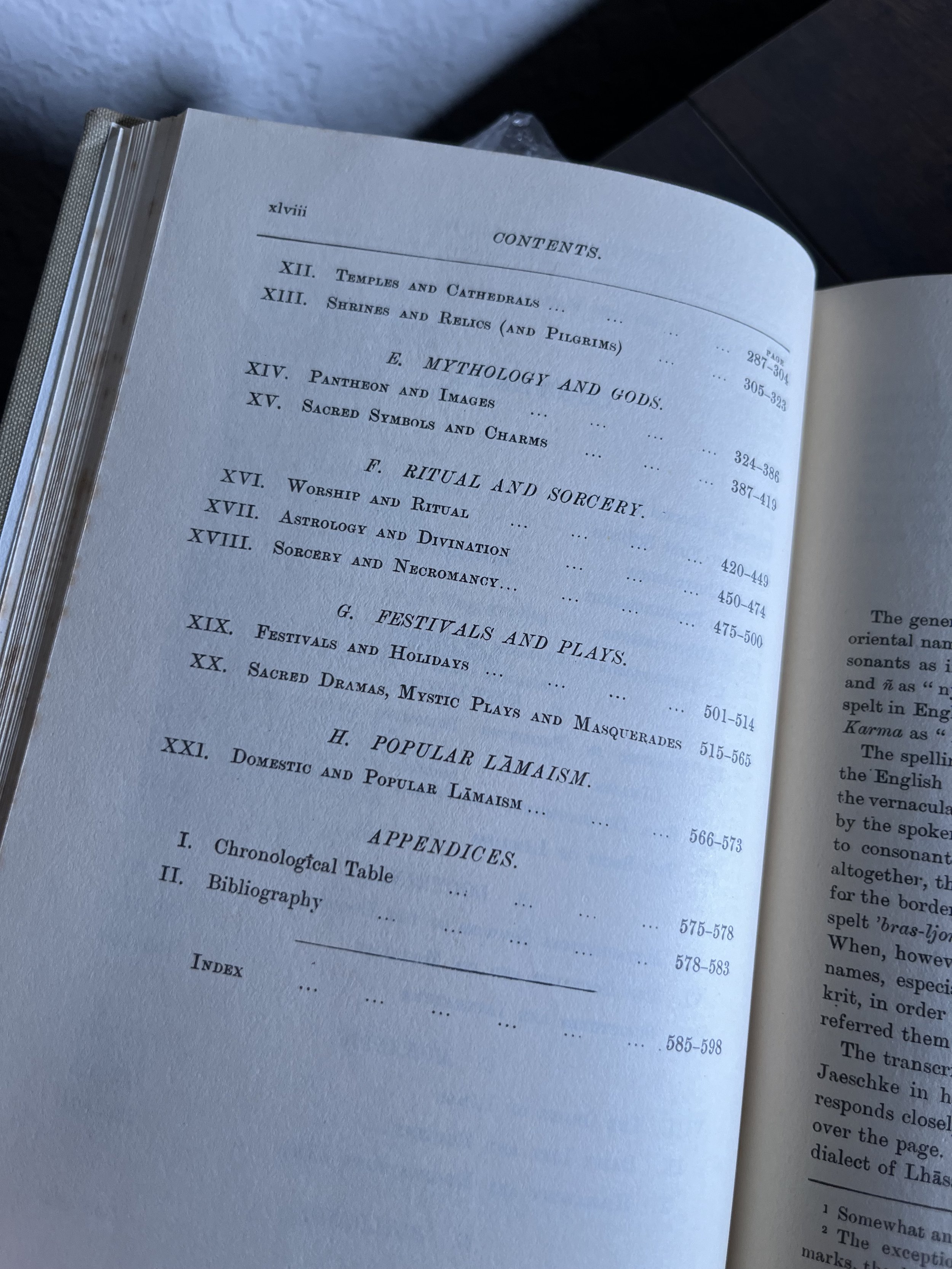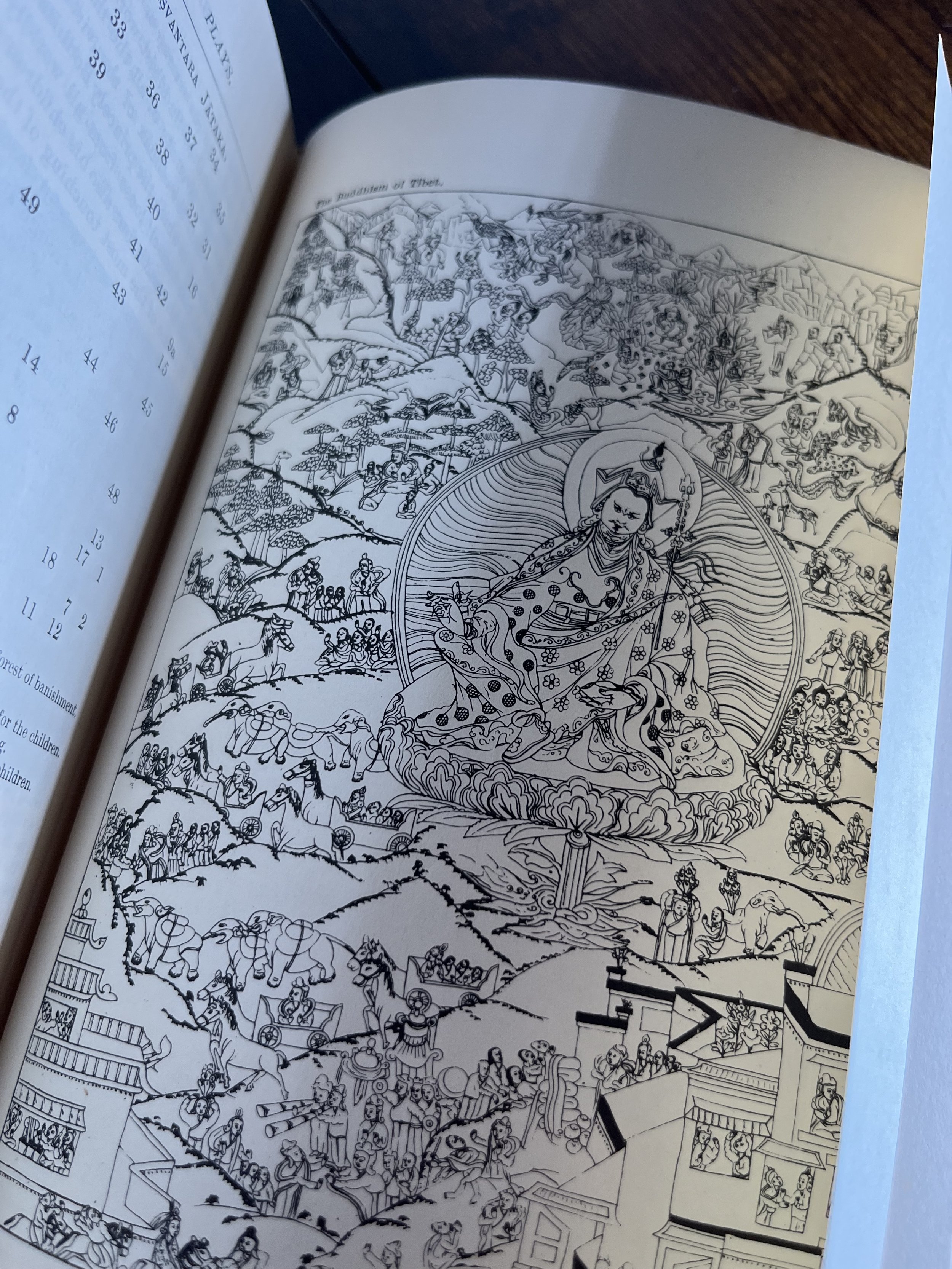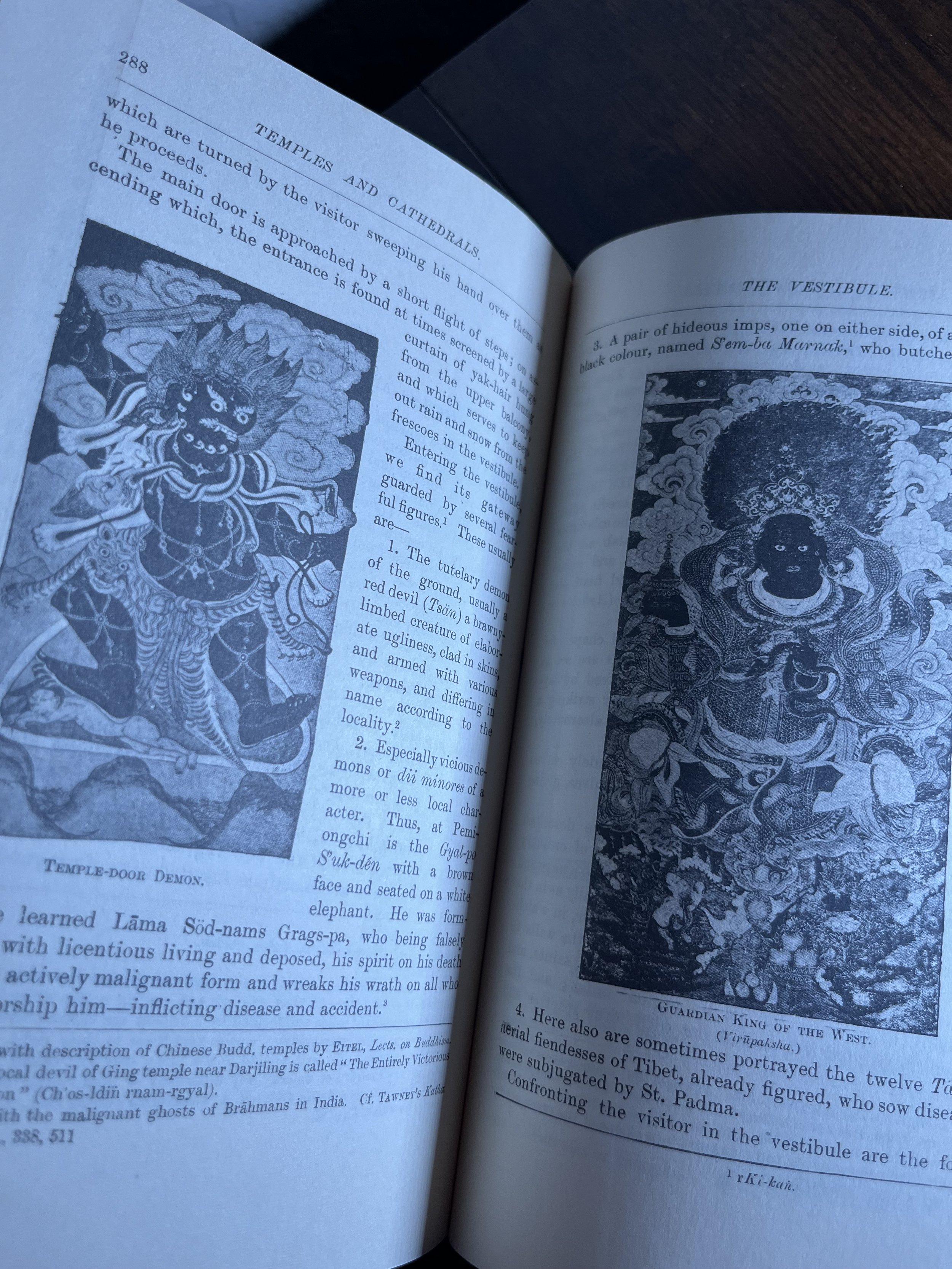The Buddhism Of Tibet Or Lamaism By L. Austine Waddell
The Buddhism Of Tibet Or Lamaism By L. Austine Waddell
Publishing: 1959 by W. Heffer & Sons, Limited; Second Edition
Condition: Very Good / DJ is in good condition
“With the Lamas, as with the ancient Greeks and Romans, the oracle is a living and highly popular institution. Dwelling in an atmosphere of superstition, the Lamas, like the alchemists of old, do not recognize the limitations to their powers over Nature. They believe that the hermits in the mountains, and the monks in their cloisters, can readily become adept in the black art, and can banish drought, and control the sun, and stay the storm; and many of their necromantic performances recall the scene of the “witches’ cauldron” in Macbeth.
Magic, and this mostly of a sympathetic kind, seems to have crept into Indian Buddhism soon after Buddha’s death. In the form of irdhi, or the acquisition of supernatural power, it is a recognized attribute of the Arhats, and even among the primitive Hinayana Buddhists. The Paritta (“pirit”) rite of the Southern Buddhists is essentially of the character of exorcism, and portions of the text of the Saddharma Pundarika, dating to about the first century of our era, are specially framed for this purpose.
But the Indian cult does not appear ever to have descended to the gross devil-dancing and Shamanist charlatanism of the Lamas; though even the Lamas seldom, if ever, practice such common tricks as swallowing knives and vomiting fire, with which they have been credited. They find plenty of scope for their charlatanism in playing upon the easy credulity of the people by working themselves into the furious state of the “possessed,” so as to oracularly deliver auguries, and by the profitable pursuits of necromancy and sorcery.”
The Buddhism Of Tibet Or Lamaism By L. Austine Waddell
Publishing: 1959 by W. Heffer & Sons, Limited; Second Edition
Condition: Very Good / DJ is in good condition
“With the Lamas, as with the ancient Greeks and Romans, the oracle is a living and highly popular institution. Dwelling in an atmosphere of superstition, the Lamas, like the alchemists of old, do not recognize the limitations to their powers over Nature. They believe that the hermits in the mountains, and the monks in their cloisters, can readily become adept in the black art, and can banish drought, and control the sun, and stay the storm; and many of their necromantic performances recall the scene of the “witches’ cauldron” in Macbeth.
Magic, and this mostly of a sympathetic kind, seems to have crept into Indian Buddhism soon after Buddha’s death. In the form of irdhi, or the acquisition of supernatural power, it is a recognized attribute of the Arhats, and even among the primitive Hinayana Buddhists. The Paritta (“pirit”) rite of the Southern Buddhists is essentially of the character of exorcism, and portions of the text of the Saddharma Pundarika, dating to about the first century of our era, are specially framed for this purpose.
But the Indian cult does not appear ever to have descended to the gross devil-dancing and Shamanist charlatanism of the Lamas; though even the Lamas seldom, if ever, practice such common tricks as swallowing knives and vomiting fire, with which they have been credited. They find plenty of scope for their charlatanism in playing upon the easy credulity of the people by working themselves into the furious state of the “possessed,” so as to oracularly deliver auguries, and by the profitable pursuits of necromancy and sorcery.”
The Buddhism Of Tibet Or Lamaism By L. Austine Waddell
Publishing: 1959 by W. Heffer & Sons, Limited; Second Edition
Condition: Very Good / DJ is in good condition
“With the Lamas, as with the ancient Greeks and Romans, the oracle is a living and highly popular institution. Dwelling in an atmosphere of superstition, the Lamas, like the alchemists of old, do not recognize the limitations to their powers over Nature. They believe that the hermits in the mountains, and the monks in their cloisters, can readily become adept in the black art, and can banish drought, and control the sun, and stay the storm; and many of their necromantic performances recall the scene of the “witches’ cauldron” in Macbeth.
Magic, and this mostly of a sympathetic kind, seems to have crept into Indian Buddhism soon after Buddha’s death. In the form of irdhi, or the acquisition of supernatural power, it is a recognized attribute of the Arhats, and even among the primitive Hinayana Buddhists. The Paritta (“pirit”) rite of the Southern Buddhists is essentially of the character of exorcism, and portions of the text of the Saddharma Pundarika, dating to about the first century of our era, are specially framed for this purpose.
But the Indian cult does not appear ever to have descended to the gross devil-dancing and Shamanist charlatanism of the Lamas; though even the Lamas seldom, if ever, practice such common tricks as swallowing knives and vomiting fire, with which they have been credited. They find plenty of scope for their charlatanism in playing upon the easy credulity of the people by working themselves into the furious state of the “possessed,” so as to oracularly deliver auguries, and by the profitable pursuits of necromancy and sorcery.”
